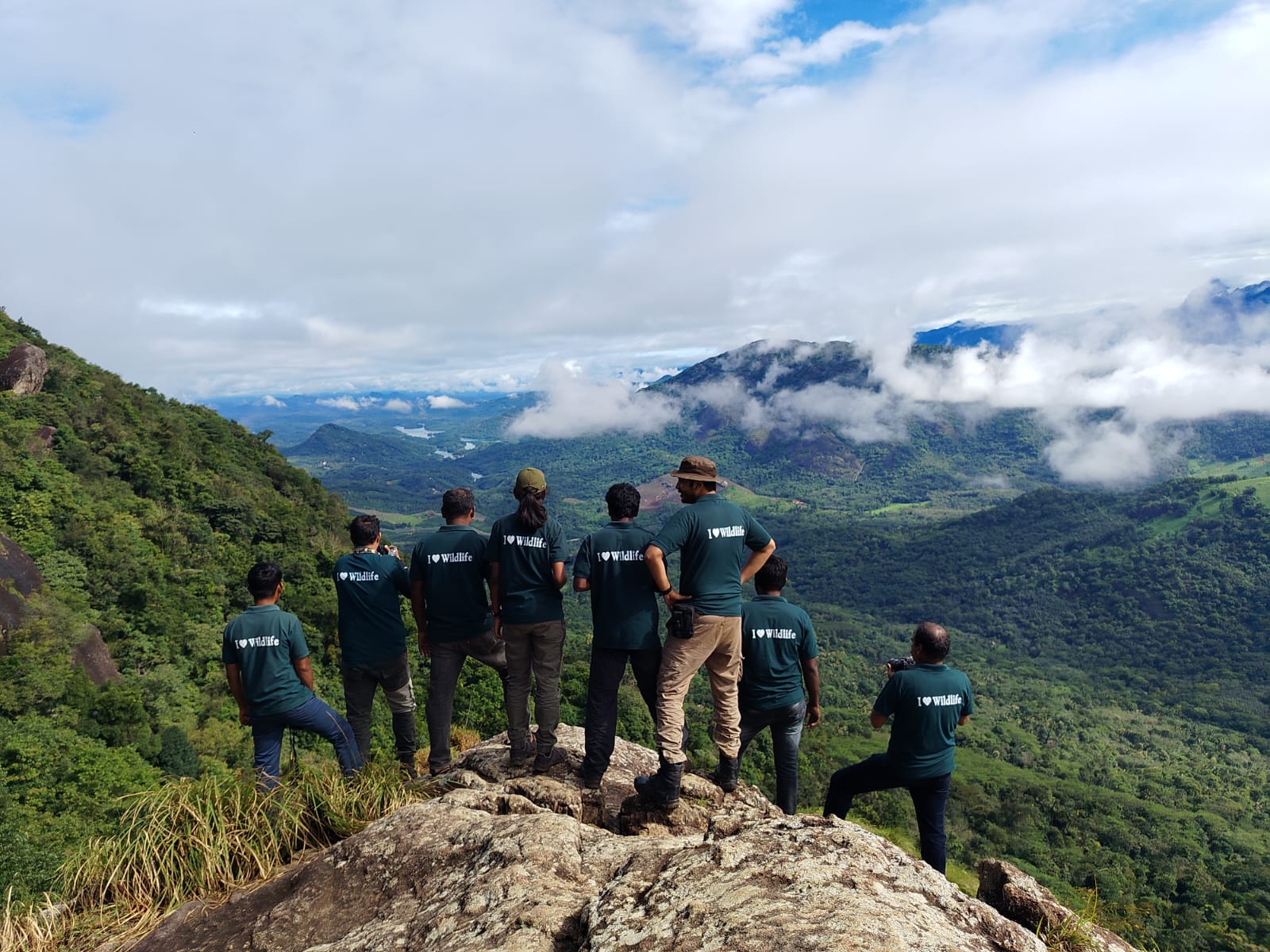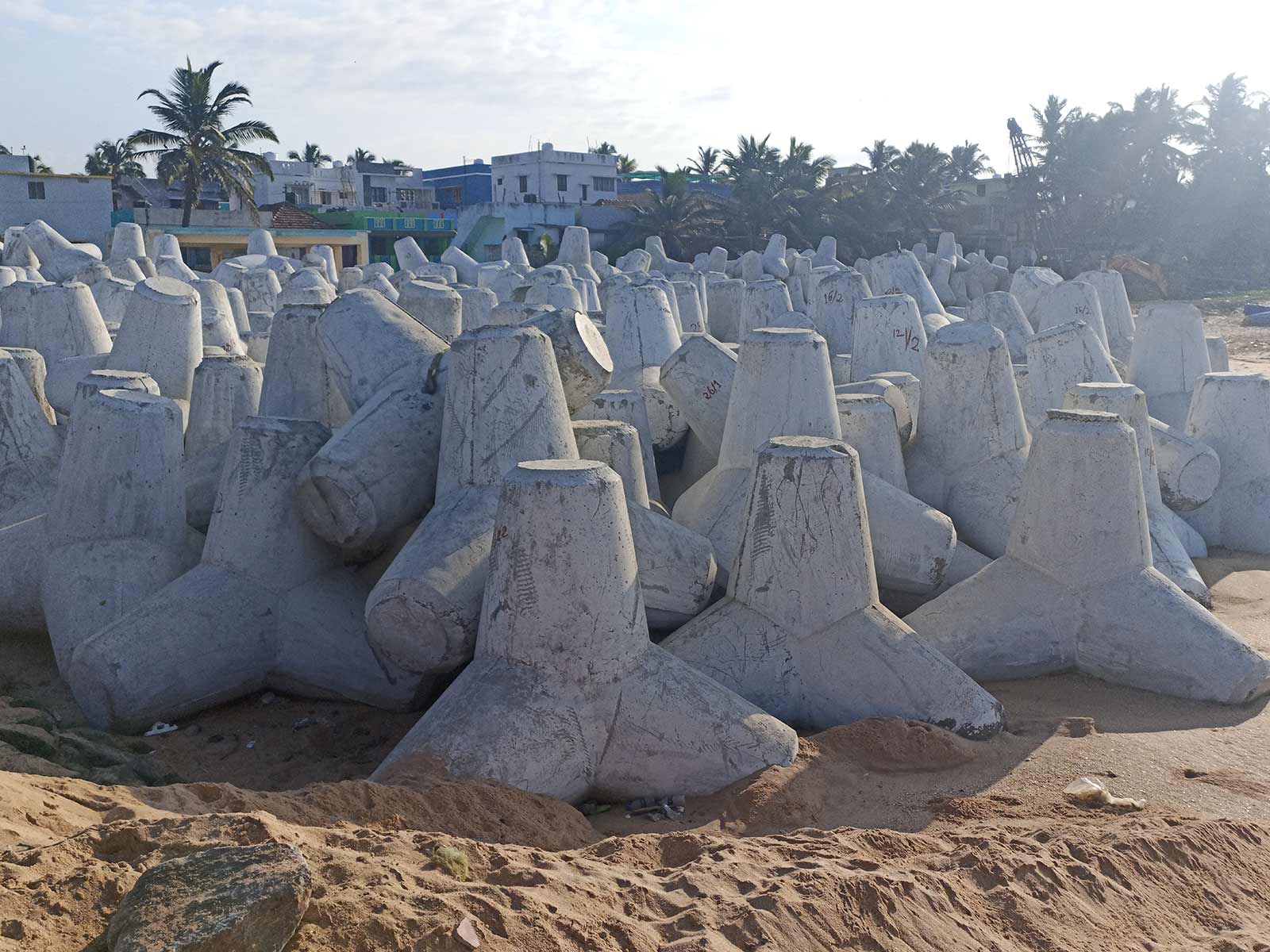Do we really need Tetrapods in Kanniyakumari beaches ?

Whenever we visit the beaches of Kanniyakumari there is a constant eyesore in the name of tetrapods. Unheard of a couple of decades ago , now they are everywhere. So what are they and why are they everywhere ?
Tetrapods are concrete structures designed to protect coastlines from erosion by reducing the impact of waves and currents. They are shaped like pyramids or tetrahedrons, and they are placed along the shoreline to create a barrier that absorbs the energy of incoming waves and redistributes it in different directions.
Tetrapods are often considered a visual eyesore because they are large, concrete structures that are placed along the coastline to protect against erosion. They are generally not aesthetically pleasing and can detract from the natural beauty of the beach.
One reason why tetrapods are considered unattractive is that they are often placed haphazardly along the beach, without consideration for their impact on the visual appearance of the coastline. This can create a disorganized and chaotic appearance that is not in harmony with the natural environment.

Beaches and tetrapods just do not mix !
The long-term impact of tetrapods on the coastal environment is a topic of ongoing research and debate. While tetrapods can provide immediate relief from erosion and protect coastlines from storm damage, their long-term impact can be complex and varied. Here are some of the potential long-term impacts of tetrapods:
- Changes to sediment transport: Tetrapods can alter the flow of sediment along the coastline, leading to changes in beach morphology and erosion patterns. Over time, the structures can trap sand and sediment on the updrift side, leading to erosion and a loss of beach width on the downdrift side.
- Habitat changes: The placement of tetrapods can alter the physical structure of the beach and create new habitats for marine organisms. However, the structures can also disrupt existing habitats and alter the natural flow of water and sediment, leading to changes in the local ecosystem.
- Changes to wave patterns: Tetrapods can alter the way waves break along the coastline, creating new surf breaks and changing the intensity and direction of wave energy. This can have a significant impact on recreational activities such as surfing and beachgoing.
- Maintenance requirements: Tetrapods require regular maintenance to ensure that they remain effective in preventing erosion. The cost of maintenance and repairs can be high, and failure to properly maintain the structures can lead to increased erosion and damage to the coastline.
- Visual impact: Tetrapods are not aesthetically pleasing and can have a negative impact on the natural beauty of the coastline. Over time, the structures can become weathered and worn, further detracting from the natural beauty of the beach.

While one set of people say tetrapods stopped erosion , the other set will point out to the adjacent beach and show the sad reality. Erosion in stopped but it has only changed locations.
What is the alternative for Tetrapods ?
There are several alternatives to tetrapods for coastal protection, depending on the specific needs and characteristics of the coastline. Here are some of the most common alternatives:
- Beach nourishment: This involves adding sand or sediment to the beach to restore it to its natural width and shape. Beach nourishment can be a cost-effective and environmentally friendly way to protect coastlines from erosion, and can also enhance recreational opportunities.
- Dune restoration: Dunes act as a natural barrier to protect coastlines from storm surges and waves. Dune restoration involves planting vegetation and using sand fences to rebuild and strengthen natural dunes.
- Living shorelines: This is an approach that involves using natural materials such as oyster shells, mangroves, and salt marshes to protect coastlines from erosion and storm damage. Living shorelines can provide habitat for marine life and are often more aesthetically pleasing than hard structures such as tetrapods.
- Offshore breakwaters: These are submerged structures that can be placed offshore to dissipate wave energy and protect the coastline. Offshore breakwaters can be less visually obtrusive than onshore structures such as tetrapods, and can also enhance recreational opportunities such as surfing.

Beach vegetation and dune formations are natural barriers to erosion.
In conclusion, there are several alternatives to tetrapods for coastal protection, including beach nourishment, dune restoration, living shorelines, offshore breakwaters, and seawalls. The most appropriate approach will depend on the specific characteristics and needs of the coastline, as well as factors such as cost, aesthetics, and environmental impact. A comprehensive assessment of these factors is necessary when choosing the most appropriate coastal protection strategy.

